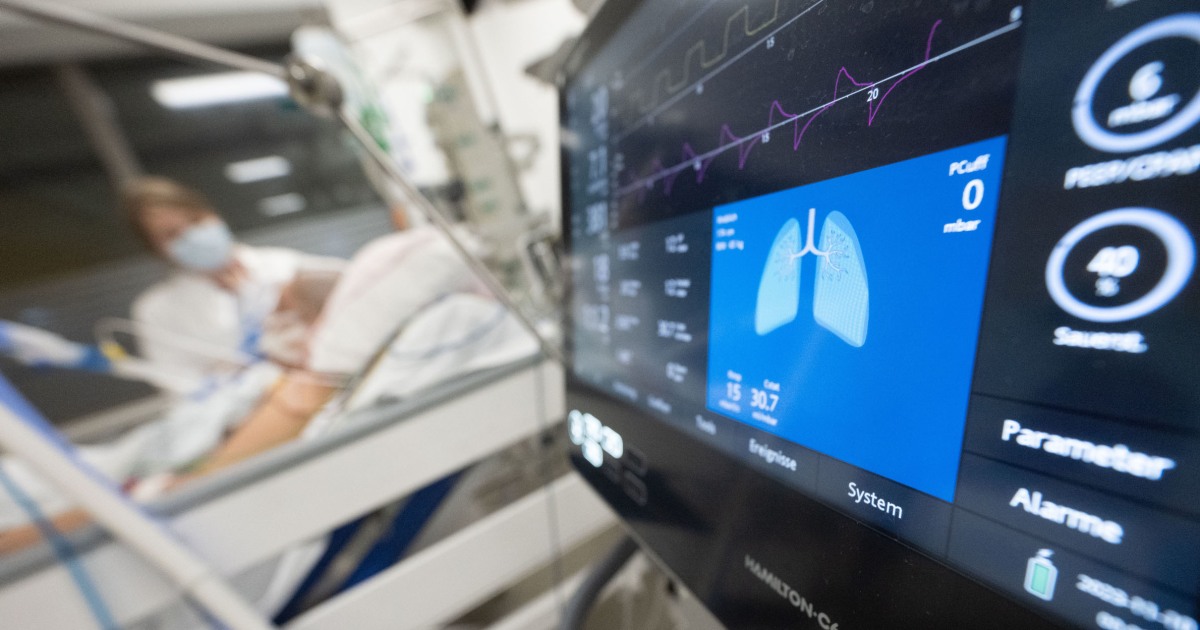
A recent study found that Latino patients who have been hospitalized with respiratory illnesses are five times as likely to be oversedated than their non-Latino white counterparts.
The survey — conducted by researchers of New York University and the University of Michigan — examined patients with acute respiratory distress syndrome, or ARDS, across 48 different hospitals across the United States. It revealed that Latino patients are exponentially more likely than non-Latino whites to be given deep sedation while on a ventilator — a known risk factor for worse outcomes and death. The study was published earlier this month in the Annals of the American Thoracic Society.
According to the research, the problem of health disparities for Latino patients on ventilators is particularly worrisome because, no matter which hospitals they went to or what their condition was, Latino patients were more likely to be oversedated than the average patient across the board.
Thomas Valley, an associate professor at the UMich Medical School and a practicing ICU doctor, said that, in an ideal scenario, sedation would not be necessary for patients on ventilators due to the risk of death and other adverse side effects. However, in practice, it is often used to keep patients comfortable and cooperating with medical staff safely.
In order to assess a patient’s level of sedation, the patient must be able to communicate with the medical staff, telling them how they feel or being able to understand and execute simple tasks, like squeezing the doctor and nurse’s hand.
“You can imagine, if you have difficulty communicating with someone, if they speak a different language, it’s really hard to get a good sedation assessment,” Valley, one of the study’s authors, said.
Implicit bias can also factor into doctors’ decision-making regarding their Latino patients, according to the study. For example, the researchers stated, doctors may make different assessments of the level of delirium or agitation of a non-English-speaking patient compared to an English-speaking patient.
The study also found that Latino patients are more likely to go to or be admitted to hospitals that utilize sedation more frequently.
Mari Armstrong-Hough, an assistant professor at NYU’s School of Global Public Health and the primary author of the study, said that disparities for Latino patients on ventilators could be related to the norms and practices of the hospital where they are receiving care.
“Certain ICUs may rely on deeper levels of sedation, eventually, more than others, we actually see evidence for that in our study,” Armstrong-Hough said. “That could be related to a lot of things that maybe it speaks to the general level of quality of care, maybe it speaks to staffing differences.”
The study’s findings are especially salient given the existing research highlighting Latino children’s outsized asthma rates, mostly due to pollution and other environmental hazards to which Latino households are disproportionately exposed.
The U.S. Department of Health and Human Services reports that Latino children are roughly 40% more likely to die of asthma than non-Latino whites. Other studies also show that this issue, while historically attributed to poverty and lower income families, affects Latino children in more affluent neighborhoods, too.
However, Armstrong-Hough warns against focusing too much on the more systemic factors that lead to health disparities for Latinos, emphasizing that the researchers’ findings were encouraging in that they give clinicians and hospitals a way to directly address and prevent such disparities.
“It’s a problem that can feel so big, but as we delve into mechanisms, particularly in the delivery of clinical care that might explain some of these disparities,” Armstrong-Hough said, “then we’re able to identify these points of intervention, these levers that we can push or that we can adjust, that can make people’s lives a lot better immediately.”
For more from NBC Latino, sign up for our weekly newsletter.






